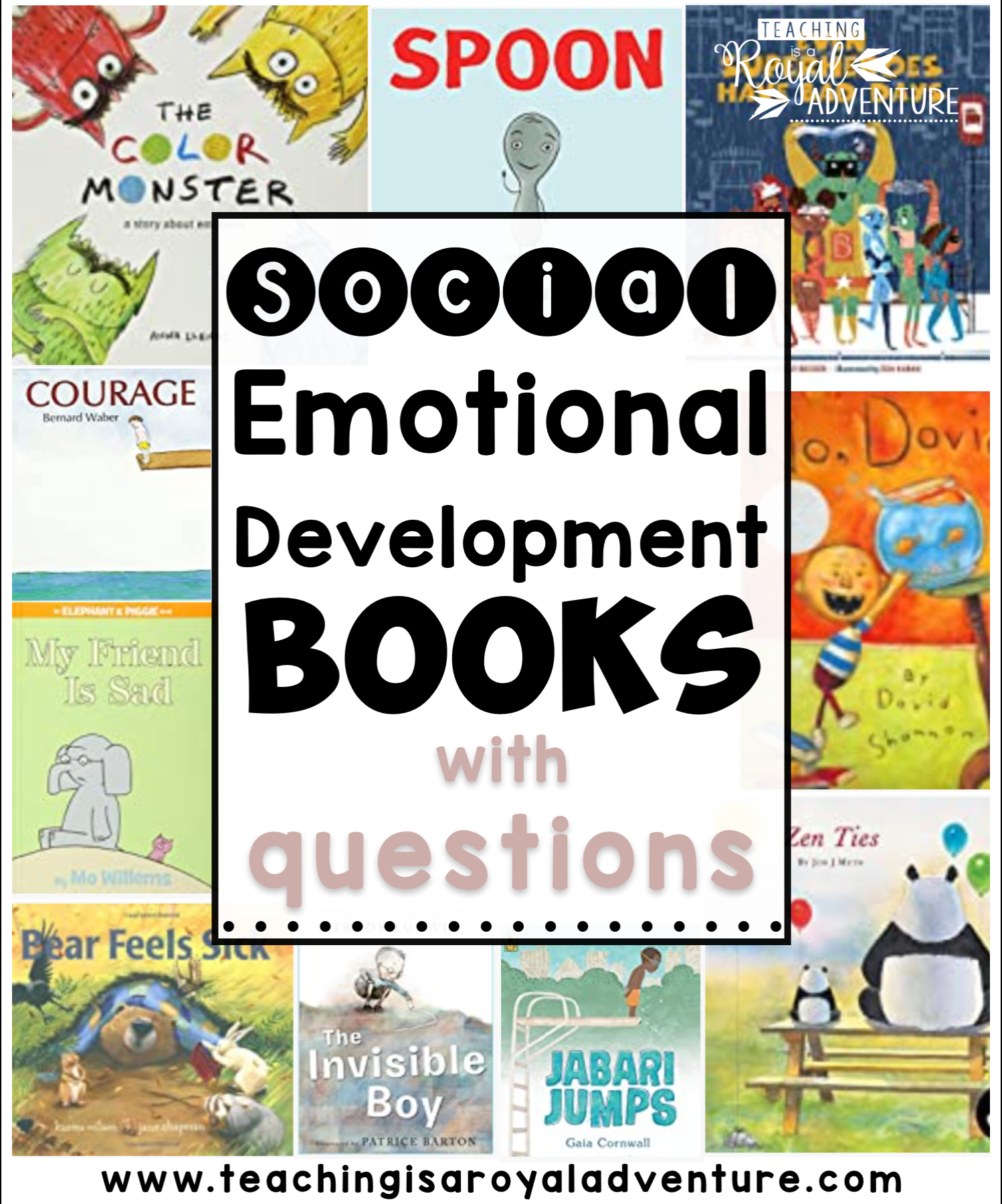No one admits this but kids invented the idea of book clubs. Think about it. Children come prepackaged with discussion guides. Reading a book with your child or in a classroom full of young children often involves unprompted comments and questions and personal experiences tied to what is happening in the story (or random unrelated ones). Sounds like a typical book club to me.
Children (just like adults!) naturally crave connections and understanding. It’s why reading about different experiences prompts questions, observations, and correlations to everyday experiences. And it’s why reading aloud with children provides the perfect opportunity to support their social-emotional development (literacy development, listening skills, and more).
Reading aloud with children provides the perfect opportunity to support their social-emotional development (literacy development, listening skills, and more). Share on XHere are 10 of my favorite read-aloud books and questions to support social-emotional development you can ask while you read together! By the way, you don’t need to ask all of the questions at once. Children learn through repetition so you can plan on reading many of these picture books again and again.
The Color Monster: A Story About Emotions by Anna Llenas
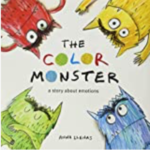
In this read-aloud story about emotions, children will explore feelings of happiness, sadness, anger, afraid, calm, and love all through the eyes of the Color Monster. Children will learn how to label emotions and even learn a self-soothing technique to help with self-regulation. Tip: Refer back to this book in everyday situations. Example: If your child experiences an intense emotion, practice breathing slowly and deeply together, just like the Color Monster.
Questions to ask while you read together:
- What do you do/how do you act, when you feel happy?
- How can you tell when someone else is happy?
- What does the Color Monster do when he feels calm?
- What helps you feel calm when you aren’t?
- How does the Color Monster feel at the end of the book? Why? When do you feel that way?
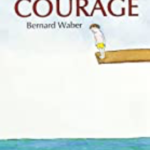
Making new friends. Being the first to apologize. Learning how to ride a bike. Saying goodbye. Waber includes many relatable situations, both big and small, where a child might need to feel courageous in interactions and relationships with adults and peers.
Questions to ask while you read together:
- Why do you think it takes courage to ride a bike without training wheels?
- Why do you think it takes courage to make a new friend?
- How do you think the little boy felt when his sandcastle was accidentally stepped on? How would you feel?
- What are some other jobs that might need courage?
- How did you need to be courageous this week?
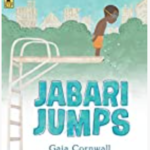
Today is the day! Jabari is ready to jump off the diving board. It’s also a day filled with fear and excitement and courage all through the eyes of a little boy who wants to take a leap of faith…but maybe he should stretch first. Cornwall includes a soothing and self-regulation technique that helps Jabari work through his fear.
Questions to ask while you read together:
- When Jabari squeezed his dad’s hand back, how do you think Jabari was feeling?
- Why do you think Jabari kept letting people go ahead of him in line?
- Have you ever tried something that felt scary at first but then felt like a surprise?
- Can you take a deep breath like Jabari? Let’s practice.
- How do you think Jabari felt after his first dive? How would you feel?
The Invisible Boy by Patrice Barton
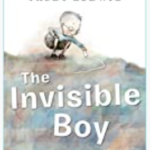
Brian isn’t really invisible but he sure does feel invisible at school. That all begins to change when he leaves an encouraging note for the new kid in class. This book helps children understand empathy and interact with peers in an inclusive and respectful way.
Questions to ask while you read together:
- How do you think Brian felt when he wasn’t picked for a team?
- How would you feel if you were Brian at lunch?
- What could the children at lunch done differently?
- Why do you think Brian left a note for Justin?
- Did Brian stay invisible throughout the story? What changed?
- What one thing can you do to include someone who might be feeling left out?
My Friend Is Sad by Mo Willems
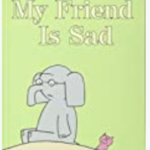
What do you do when your friend is sad? Well, if you are a pig named Piggie you’d do what you could to make your friend, Gerald, happy. The expressive drawings make it easy to point out facial cues for sadness, surprise, and happiness. Tip: Point out the facial cues in the story and practice making your own and guessing the feeling together.
Questions to ask while you read together:
- How can Piggie tell that Gerald is feeling sad?
- How did Gerald feel when he saw the robot?
- What finally made Gerald feel happy? Why?
- What or who helps you when you feel sad?
Even Superheroes Have Bad Days by Shelly Becker
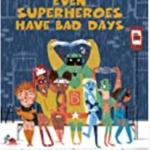
Everyone experiences bad days, even superheroes. This read-aloud book teaches children self-control and wise choices when they find their emotions tempting them to act out in destructive ways. This book features fun drawings to point out the consequences of our actions when superheroes need to work on their self-control.
Questions to ask while you read together:
- What are some of the ways that the superheroes chose to blow off steam?
- What can you do when you feel frustrated or angry or you are having a bad day?
- How do you think it would work out for you if you decided to blow off steam by destroying something or yelling in the middle of a store? What could you do instead?
- What did the superheroes choose to do when they felt upset? How could you do that, too?
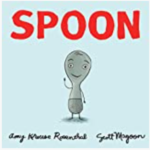
This clever read-aloud book uses utensils to celebrate family and differences, what makes a person unique and even the complex emotion of jealousy. You will never look at your utensil drawer the same again.
Questions to ask while you read together:
- What does it mean to feel blue?
- Why did Spoon feel blue?
- Would you rather be a spoon, knife, fork, or a pair of chopsticks? Why?
- What is your favorite thing about being you?
- What is your favorite thing about the person sitting next to you?
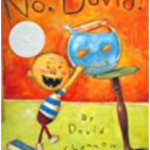
Self-control is a key component of social-emotional development and it takes years to develop. While the words are few in this picture book, young children will find the humor in the poor choices David makes. This book offers a starting place for talking about consequences for our actions as well as the power of forgiveness.
Questions to ask while you read together:
- How does David feel when he gets sent to his room? How do you know? Why do you think he felt that way?
- How do you feel when you get sent to your room?
- How does David feel when he breaks the vase? How do you know?
- How do you think David felt when he received a hug at the end of the book?
- Why do you think she gave him a hug?
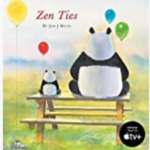
When Stillwater’s nephew, Koo, comes to visit, he invites the neighborhood children to the home of Miss Whitaker. Along the way, he teaches them about compassion, friendship, and empathy.
Questions to ask while you read together:
- How did the children react when Stillwater invited them to visit Miss Whitaker? Why?
- What did they do before they went to her house? Why?
- What is something that you have done to help someone feel better?
- Why do you think Miss Whitaker yelled at the children in the beginning?
- How did the children’s perspective of Miss Whitaker change? Why?
Bear Feels Sick by Karma Wilson
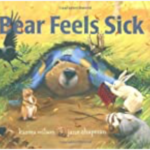
Learning how to be a good friend and recognizing the qualities of a good friend takes practice. This classic Karma Wilson book shows that good friends take care of each other.
Questions to ask while you read together:
- How do you think Bear felt when his friends showed up to help him?
- How do you feel when someone takes care of you when you are sick?
- What were some of the ways that they took care of Bear?
- Do you think Bear has good friends? Why or why not?
- Why does Bear help his friends when they get sick, too?
Now It’s Your Turn
It wasn’t easy picking just 10 books that support social-emotional development in young children! Did we leave YOUR favorite off the list? Share it in the comments.
